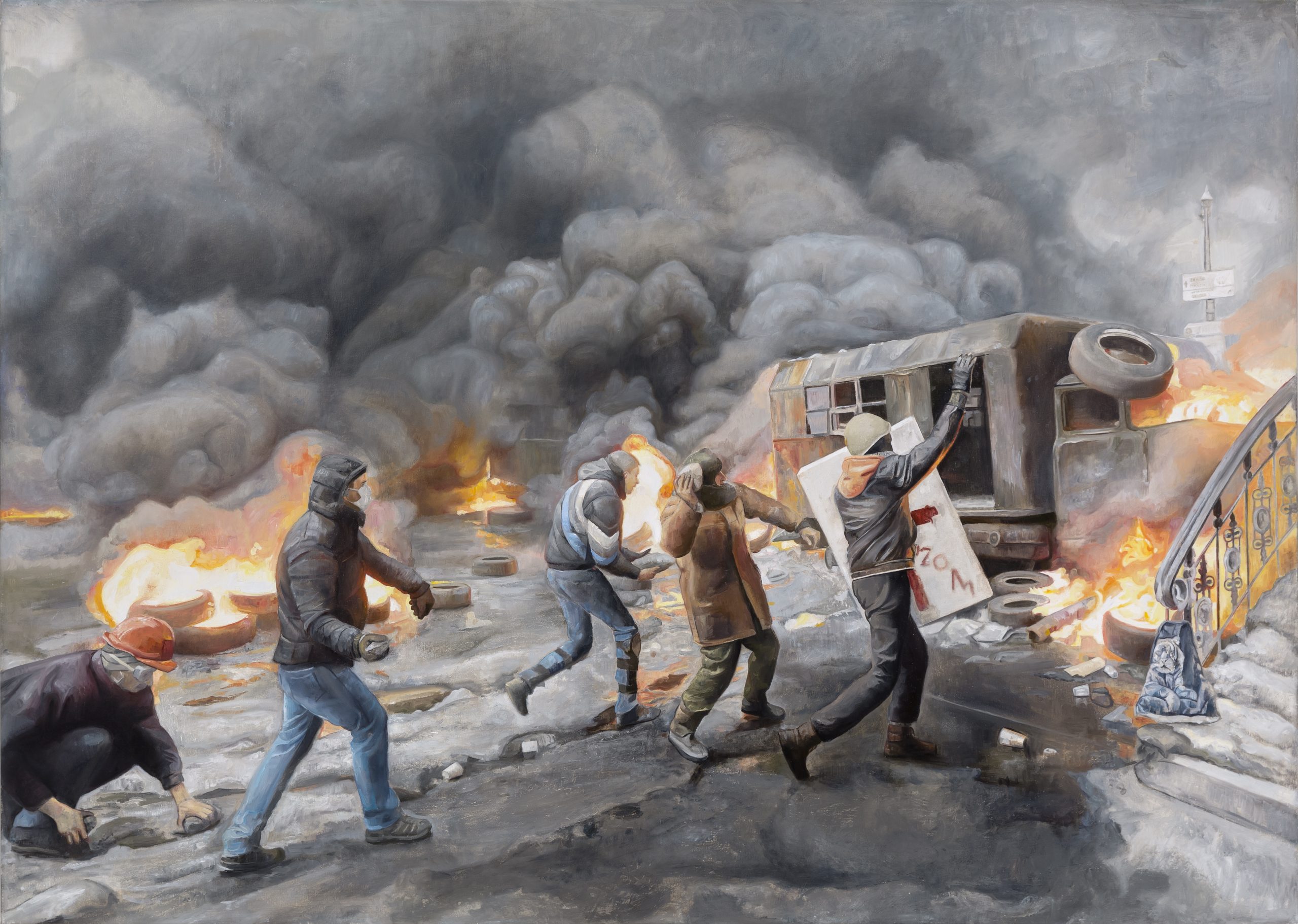Realism Redivivus And Universal
Written by Donald Kuspit

David Molesky — MAIDAN, 2015 | oil on canvas, 46 x 70 in
Excerpt from his review of the group exhibition Fourth Wall, at Booth Gallery
Thus the imaginative transformation of history—while remaining true to the violent facts— into tragic myth by Miller, Molesky and Scott. Miller shrouds his combatants— archaeologists fighting over dinosaur bones—in luminous darkness, Molesky’s ukrainian rioters are in a kind of hell—thick smoke rises from numerous fires, and Scott’s ghostly soldiers are in a lurid atmosphere. The archaeologists, rioters and soldiers are engaged in a fight to the death. Indeed, all three works show the Triumph of Death, ready to act with a stone and a pickax in Miller’s picture, with rocks and Molotov cocktails in Molesky’s picture, and with pistols and rifles in Scott’s picture. All three works are moral allegories— object lessons in human folly, the Hobbesian war of all against all. They are meticulously executed in Old Master styles: a version of tenebrism in Miller, a version of proto- Renaissance style in Molesky, a version of romantic realism in Scott. The works are fraught with allusions to Old Masterpieces, suggesting they are New Masterpieces. Miller, Molesky and Scott are what I have called New Old Masters; that is, they use Old Master styles to mediate modern reality and to give emotional and cognitive depth to events that the mass media would treat superficially (one more momentarily hot news story, here today, gone tomorrow). They are narrative painters, and, like Old Master narrative painters, they force us to take seriously the scene they depict, not only because of the deliberateness and care with which they render it—no quickie slick photograph or newsreel excerpt from a TV broadcast—but because they make it clear, as the Old Masters do with the scenes they represent, that it is a particular example of a universal story. To immortalize a scene or an individual, as Old Master art has been said to do, so that it seems to be fully “realized,” and with that to exist in what has been called “the eternal present” of art, is to bring out its universal significance.
